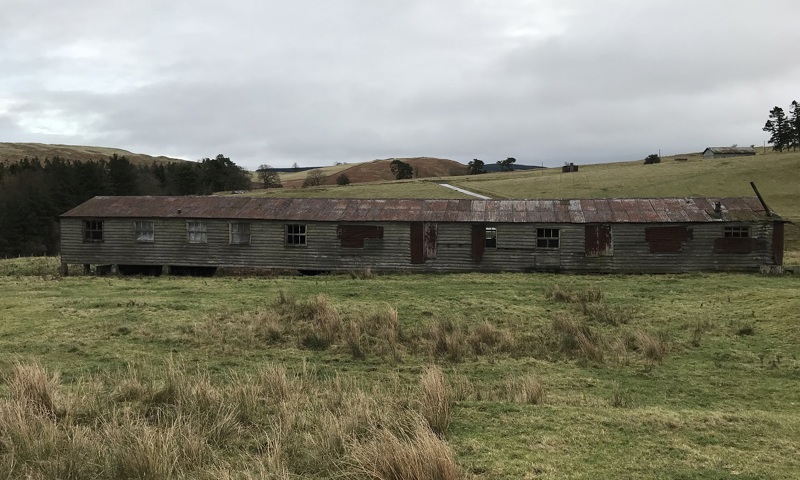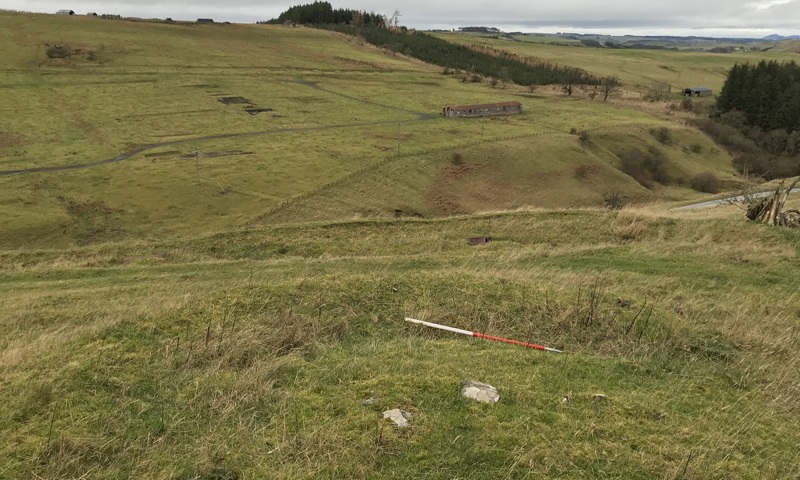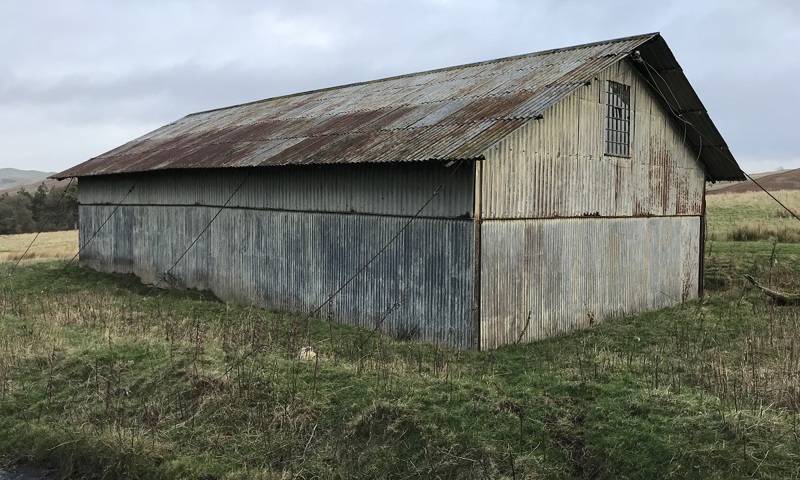Historic Environment Scotland (HES) has designated Stobs Camp, after the organisation was asked to consider designating parts of the site as a scheduled monument last year.
The site, located near Hawick and spanning 7 square kilometres, consists of a civilian internment camp, prisoner-of-war camp and training trenches, all from the First World War, along with a tank target range used for military training up to and during the Korean War. The Stobs Estate was originally purchased by the War Office in 1902, with the aim of having a permanent training base and barracks for one of the Army Corps. Within months of its creation, nearly 20,000 troops had been through the camp, making it larger than the population of Hawick, at the time.

First World War Prisoner of War accommodation at Stobs Camp
The most significant parts of what remains at the original site are now designated as scheduled monuments, including the remains of the camp, First World War training trenches and firing ranges, and a Second World War tracked target range for tanks that is unique to Scotland. Stobs is also home to the last surviving example of a First World War prisoner of war accommodation hut still in its original location in the UK.
Following an assessment and a public consultation, HES decided that the site met the criteria to be a scheduled monument. The site is of national importance because it makes a significant contribution to our understanding of the military heritage of Scotland, in particular the history of early 20th century military training and First World War internment and imprisonment. The assessment of Stobs Camp also found that the site is a rare example of an extensive military camp and serves as a physical reminder of the importance of military camps and wartime internment as part of Scotland’s recent past.
The public consultation received 90 responses, which were overwhelmingly in support of HES’s proposal to schedule Stobs Camp and associated sites.

A view across the Stobs Camp site
The area that has been designated as a scheduled monument covers much of the camp remains. These survive as buildings, upstanding features such as hut bases and earthworks, and also as buried archaeology. The scheduling recognises the significance of the site and ensures that what is important is taken into account in the long term management of the site.
Dara Parsons, Head of Designations at HES, said:
Stobs Camp is an outstanding monument to Scotland’s role in the two great conflicts of the 20th century. It gives us a unique insight into the experience of those involved in these conflicts; those that served in the British military, civilian internees and prisoners of war.
"We're delighted to have had such a positive response to our proposal. Designating a site as a scheduled monument helps to recognise what is most special and ensures that significance informs long-term management for future generations."

A pre-First World War storage hut at Stobs Camp
Dianne Swift, Development Manager at Archaeology Scotland, said: "Since 2016 Archaeology Scotland have supported investigation and learning about Stobs Camp with members of both local and global communities. Its designation as a scheduled monument will help raise awareness of the important work they have delivered and ensure the stories relating to Stobs Camp are more widely known."
The report and consultation survey can be viewed on HES’s Consultation Hub and more information about Stobs Camp can be found on the the Stobs Camp Project website.
Read the report and surveyAbout Historic Environment Scotland (HES)
- We are the lead public body charged with caring for, protecting and promoting the historic environment. We will lead on delivering Scotland’s first strategy for the historic environment, Our Place in Time.
- Historic Scotland, Scran, Canmore, The National Collection of Aerial Photography (NCAP), The Engine Shed, Stirling Castle and Edinburgh Castle are sub-brands of HES.
- View our press pack and keep up to date by registering for media release email alerts. If you wish to unsubscribe, please contact us.
Follow Historic Environment Scotland
Twitter: @HistEnvScot | @welovehistory
Facebook: @HistoricEnvScotland | @VisitHistoricScotland
Instagram: @HistEnvScot | @historicscotland
For further information, please contact:
Laura Ely
Historic Environment Scotland Media Office
Mobile: 07880 134 601
communications@hes.scot
